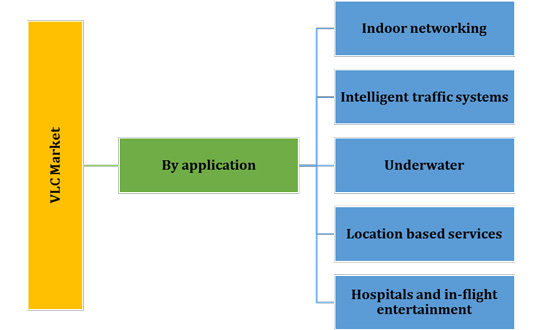- News
25 January 2016
Visible light communication market to grow at 64% CAGR to more than $8bn in 2019
The global visible light communication (VLC) market will post a remarkable compound annual growth rate (CAGR) of close to 64% to more than $8bn in 2019, according to the report 'Global Visible Light Communication Market 2015-2019' by Technavio.
The report segments the visible light communication market by application as: indoor networking, location-based services, intelligent traffic systems, in-flight communication and entertainment, and underwater communications.

Indoor networking market using VLC
The global indoor networking market using VLC is expected to approach $6bn by 2019, growing at a CAGR of almost 65% during the forecast period.
Retailers can use VLC technology to enhance the shopping experience of customers, and improve the value delivered. About 60% of customers use mobile phones in retail stores, and around 70% of sales are made in the aisle. The use of this technology can further ensure that shoppers looking for specific goods on their shopping list will be directed to them easily.
"The adoption of this technology, along with indoor position apps, will improve the targeted advertising of retailers and enhance their sales," says Technavio's lead semiconductor equipment industry analyst Asif Gani. "Moreover, low data rates and existing infrastructure will reduce costs considerably."
Location-based services market using VLC
As GPS does not work in an indoor environment, the accepted technology for identifying location in such environment is the deployment of Wi-Fi AP. VLC can be used as an alternative to Wi-Fi due to its ability to offer accurate indoor locations, as numerous LED luminaires are generally installed in a building. A typical building has 10 times more LEDs than Wi-Fi APs. The higher density of LEDs can ensure precise pinpointing of mobile devices, resulting in improved accuracy. The adoption of LED lighting networks for their energy efficiency will add to the growth of the location-based services segment, says Technavio.
Intelligent traffic systems market using VLC
The use of VLC technology in traffic systems will allow drivers to use smart devices or car headlights to connect and generate information such as traffic updates, shortest estimated time of arrival to a specific location (taking into account traffic congestion), and even for Internet access. This information can be transmitted to other cars using tail lights.
"Efficiency of these intelligent traffic systems may be affected due to noise, but such interference can be avoided by using specific colored lighting to transmit information, and programming the receivers to recognize specific wavelengths," notes Gani.
In-flight communication and entertainment market using VLC
VLC technology can be used in flights for entertainment or for providing Internet access, as this technology does not interfere with flight avionics or any other electrical equipment in the surrounding area. Also, the use of VLC will reduce the amount of cabling required, which will ultimately reduce the weight of the aircraft, increasing fuel efficiency and adding flexibility to seating layouts in the aircraft cabin, notes the report.
Underwater communication using VLC
The use of radio frequency (RF) in water is impractical because of strong signal absorption, and the low bandwidth of acoustic waves disturbs marine life. Therefore, VLC technology can be incorporated in the headlights of underwater devices or divers to facilitate communication. At present, underwater devices such as remotely operated underwater vehicles (ROV) are powered by wires. However, if VLC is used, these devices will be able to roam freely, and transmit and receive data from the surface.
The top vendors of VLC systems highlighted in the report are: pureLiFi, Oledcomm-France LiFi, Nakagawa Laboratories, Outstanding Technology, LightPointe Communications, and fSONA Networks.
www.technavio.com/report/global-semiconductor-equipment


